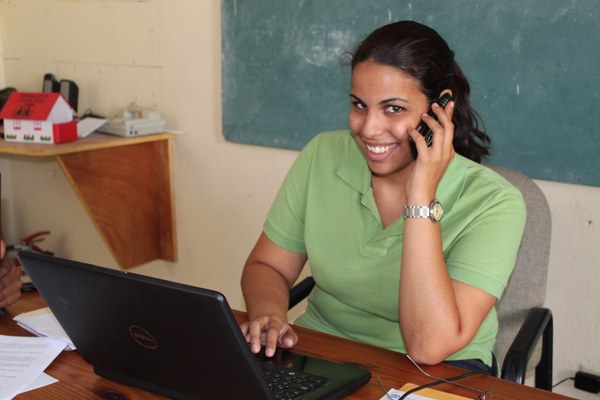Haiti news: Lucia's story

Lucia Veloz, national sponsorship coordinator of SOS Children’s Villages in the Dominican Republic, tells her story
Lucia Veloz was working as the national sponsorship coordinator of SOS Children’s Villages in the Dominican Republic when she heard about the earthquake in Haiti. She tells her story:
“On the day of the earthquake I got a call saying there had been an earthquake but nobody seemed to know where. I called the SOS National Director (in the Dominican Republic) and she said that she had felt it. She said that she had called SOS Haiti but there was no answer. I called a friend in the army who said yes, the earthquake had struck Haiti and there were many people dead. It was total destruction. Already, there were teams crossing over into Haiti to help. And at that point we started to try to get lines of communication with Port-au-Prince. On January 13th I had to go to the Village in Santiago up north because I had sponsors coming and during the entire trip we listened to the radio trying to find out what had happened. When we came back to the capital we still hadn’t had any communication with SOS Haiti. I called a few friends but no one seemed to know anything. It was still very hectic.
An orphanage had fallen down
Then eventually we heard that an ‘orphanage’ had fallen down in the area where the Santo Children’s Village is located. We got very scared because we didn’t know what the situation was. The National Director decided to charter a helicopter to fly over Haiti because the roads were blocked. We got in the helicopter on January 14th at 9.00 am. The pilot was also in the military and he told me more about the situation. He said that we were not allowed to land anywhere except at the international airport and the Dominican Embassy. We landed at the international airport and we started trying to contact our people here but nobody picked up (the phone). So we put in the coordinates to the Village and we flew over the Village. Once we saw that everything was OK it was a complete relief. However, we were not able to land. But we showed them SOS logos so they knew we were SOS and were trying to help.
What are those white lines?
There was one time when the pilot told me to shut down the camera and I remember we were flying about 200 feet up and I asked him, ‘What are those white lines along the street?’ And he said those are not white lines those are corpses covered in sheets and there were hundreds of them. And it was a complete shock for me. So we went back to the Dominican Republic and once we got there we immediately sent the information to the regional, continental and international offices. It was at that point that the Emergency Relief Programme was set up. The first contact we had with SOS Haiti was 15th January. Lucia started attending the UN logistics cluster in the Dominican Republic, which was helping move things into Haiti overland and through humanitarian flights. Her task was to see that all the trucks crossed the border and ensure that all the people got on their flights and that they crossed into Haiti.
Lucia handles people, logistics and sponsorships
During the months after I couldn’t go to Haiti as I had sponsorships reports to do but I was still involved in logistics coordination for Haiti. I came here (she is working in Haiti for six months) originally to restructure everything to do with human resources because during the post earthquake time we had a lot of people working for SOS, volunteers and temporary workers, and there was a lot of misinformation.
Before the earthquake, Haiti had a little over 2,000 sponsors. Right now they have over 5,000 sponsors and is the country that has the most sponsors in the region, although it does not necessarily have the most children. So I am providing support and ensuring the sponsors get the information they require. Once you provide the sponsors with the picture and with the story they begin to see that the children are happy. Even though the children were not necessarily affected directly by the earthquake, they had the trauma of not knowing the whereabouts of friends and biological family.
Nothing you could imagine
This is not how I imagined it would be. Not at all. I saw the pictures, and people in the Dominican Republic told me their stories, but until you get here, until you see the reality, you can’t know. It’s nothing like you anything you could imagine. One of the things we hope to do is to provide the staff and the local people with the sense that SOS is here to help, that SOS has been here since the beginning. At the highest point we were providing assistance to over 20,000 people. We are not here to impose anything but we are here to provide the support and basically just have them be the best they can be.”
Find out how you can support our work in Haiti by starting an emergency relief sponsorship or start sponsoring now
 Return to Schools Wikipedia Home page…
Return to Schools Wikipedia Home page…
